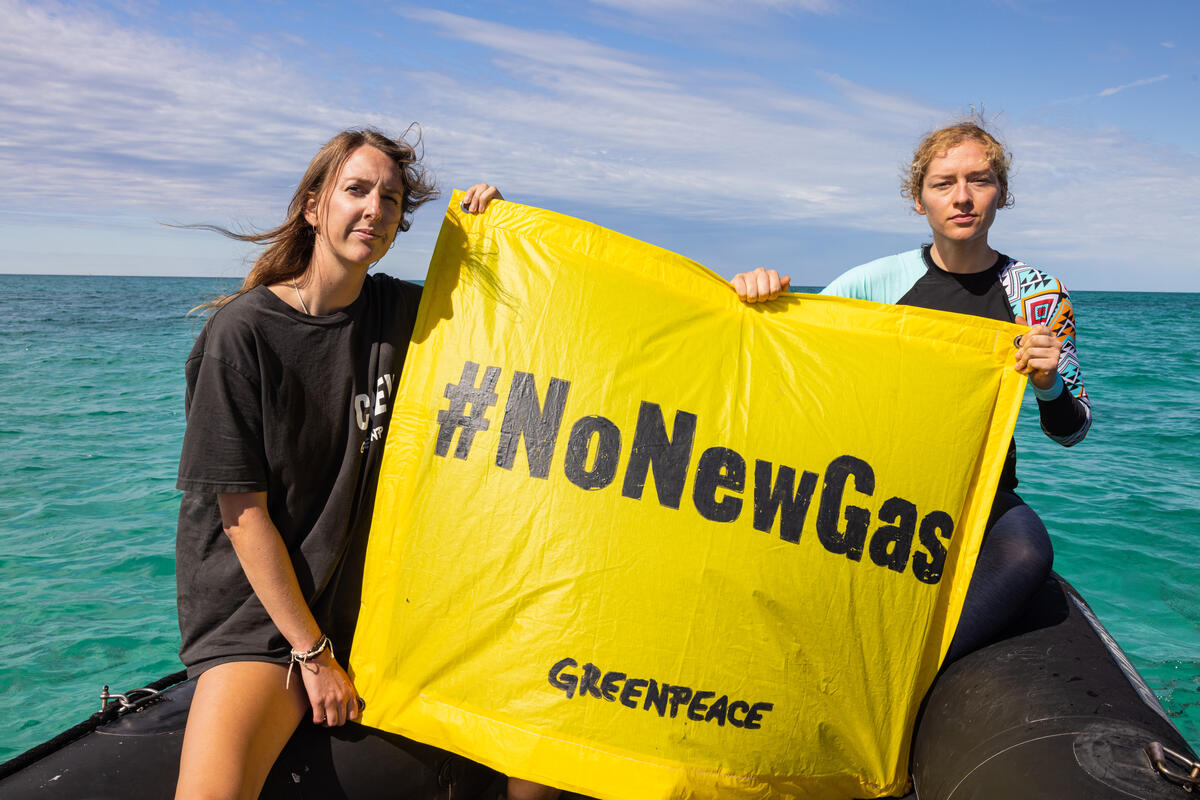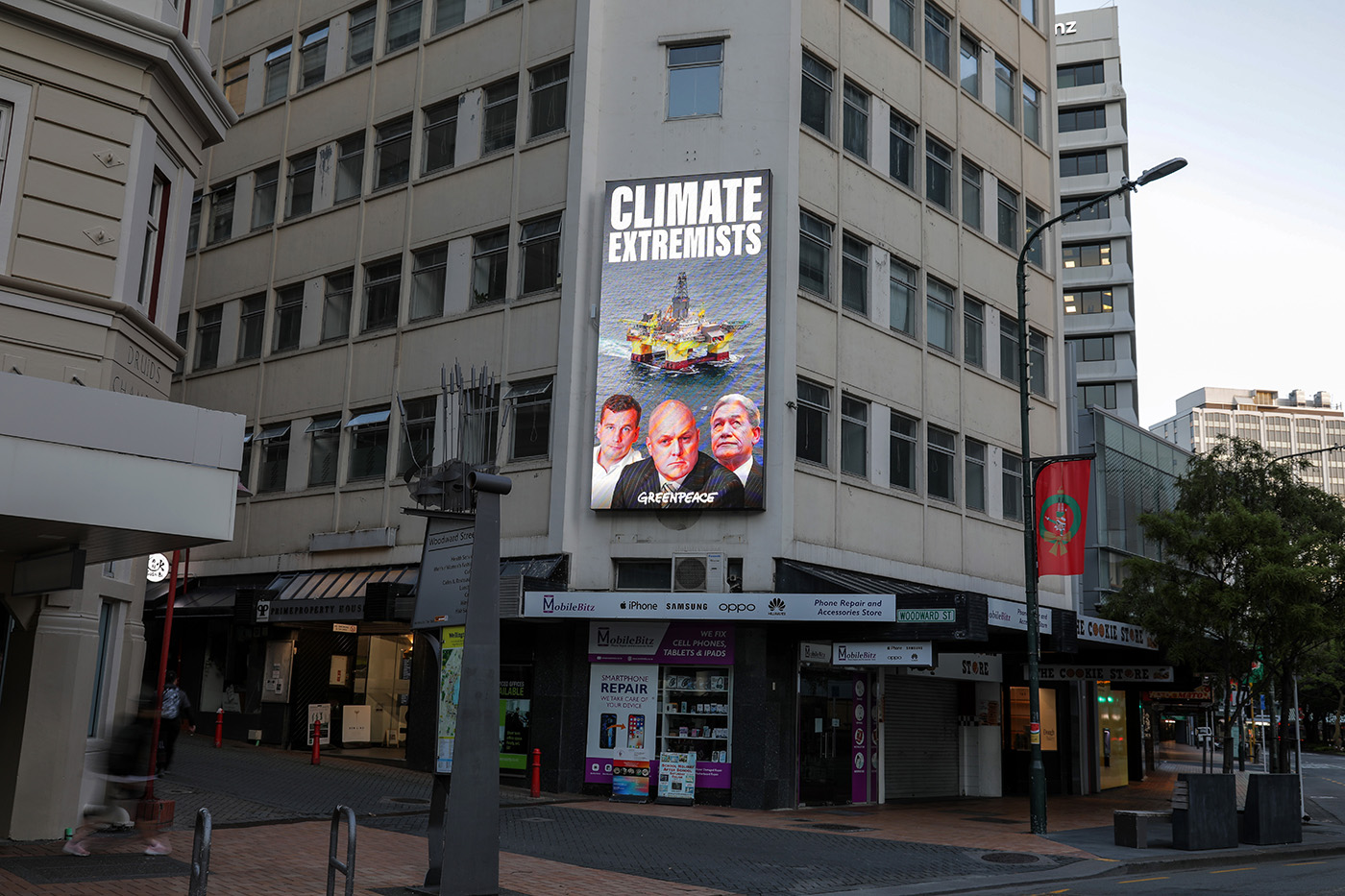After confronting Statoil and Chevron seismic blasting 50 nautical miles off the Wairarapa coast in small inflatable boats, we put out a call to New Zealanders to help us buy a bigger boat.
The response was phenomenal. Within seven days we’d crowdfunded nearly $100,000 and bought a bigger boat! As the newest member of the Greenpeace fleet, it’s got its rainbow stripes, and a new name chosen by you.Taitu as a verb meaning to hinder, impede, deter, and thwart an enemy.
As a name for a boat it references the sea (Tai) and Tu means standing, strength, warrior spirit. Soon we plan to head out again, this time in our people-powered boat Taitu, and continue our protest against climate-wrecking oil exploration.This is the speech that Kate Simcock gave at the naming ceremony for Taitu before it headed North to Napier.
I love boats.Greenpeace loves boats.
And as an island nation in the South Pacific, New Zealanders of diverse heritage have a history, connection and a love of boats.
And of course, we love boats because we love the ocean.
The very first action of the newly formed Greenpeace was the peaceful voyage of a boat in 1971, to protest Nuclear testing in the islands off Alaska.
Our founders – a ragtag bunch of dreamers out of Vancouver, Canada – sailed the rusty old Phyllis Cormack to bear witness against a nuclear bomb set to be exploded by the US military.
Only a year later, a kauri hulled boat named Vega sailed out of Northland New Zealand. The Vega was renamed Greenpeace 3.
It was captained by David McTaggart with New Zealander Anna Horne onboard, and its peaceful mission was to protest French atmospheric nuclear testing at Moruroa Atoll in the Pacific.
And so too Greenpeace New Zealand began 44 years ago with the voyage of a boat.
The Vega sailed again in 73 and in that protest was joined by two New Zealand navy frigates; the Otago and Canterbury that were on a mission to also bear witness on behalf of the New Zealand government in peaceful protest against France’s nuclear testing.
When Prime Minister Norman Kirk farewelled the crew of the Otago in ‘73 he said – “Yours is an honourable mission with the power to awaken the conscience of the world.”
By 1974 the French had sent its testing underground.
Greenpeace, in alliance with others such as the Peace Flotilla, protested the visits of nuclear ships to our harbours and continued to organise missions to protest all testing in the Pacific until it finally ended in 1996.
One of those missions was by a boat called the Rainbow Warrior – also a rusty old boat renamed, painted with rainbows and scraped back by a bunch of dreamers.
It was as the Warrior was preparing to lead another flotilla to Moruroa – that she was infamously bombed by the French Government in Auckland harbour in July 1985 causing the death of Fernando Pereira .
Our mission then was stopping nuclear testing in the Pacific.
Our mission now is stopping Climate Change. And it has strong parallels with the nuclear-free history.
The last mission of the Rainbow Warrior, before it was bombed, was a humanitarian mission – the evacuation of the 300 citizens of Rongelap Atoll who had suffered the terrible consequences of US testing in the Marshall Islands.
Today our mission is also a humanitarian one as well as an environmental one.
Because everyone and everything is affected by climate change, and again some of the worst effects are happening right in our backyard to the people of the Pacific.
And just as the bold, some might say crazy, missions to sea of our past had the power to awaken the conscious of the world – to nuclear testing, to the killing of whales, to ocean dumping and drift-netting… So too is our mission now, one in which we seek to awaken that conscience, and inspire and compel urgent action on climate change.
For we must, if we are to survive.
Just like nuclear war – climate change is an existential threat.
If we are to have a future the oil industry must have no future.
When we painted the rainbow onto the hull of Taitu we painted a symbol of our proud and successful history onto her. We welcomed her as the latest member of an intergenerational flotilla of dozens of boats crewed by thousands of people from every corner of the earth that have voyaged and sailed on countless missions for people and planet.
That rainbow symbol reminds us of the hope inherent in action.
It reminds us that against great odds we can change the world.
And when we set to sea in Taitu for the first time, we will carry all of you with us.
Together we ended nuclear testing in the Pacific.
And together we can Rise Up and bring an end to the age of Oil.
And together we have the power to awaken the conscience of the world.Get On Board~ PLEASE SHARE!
We are the generation that ends oil.
Get on board – because when we stand together, we always win.


